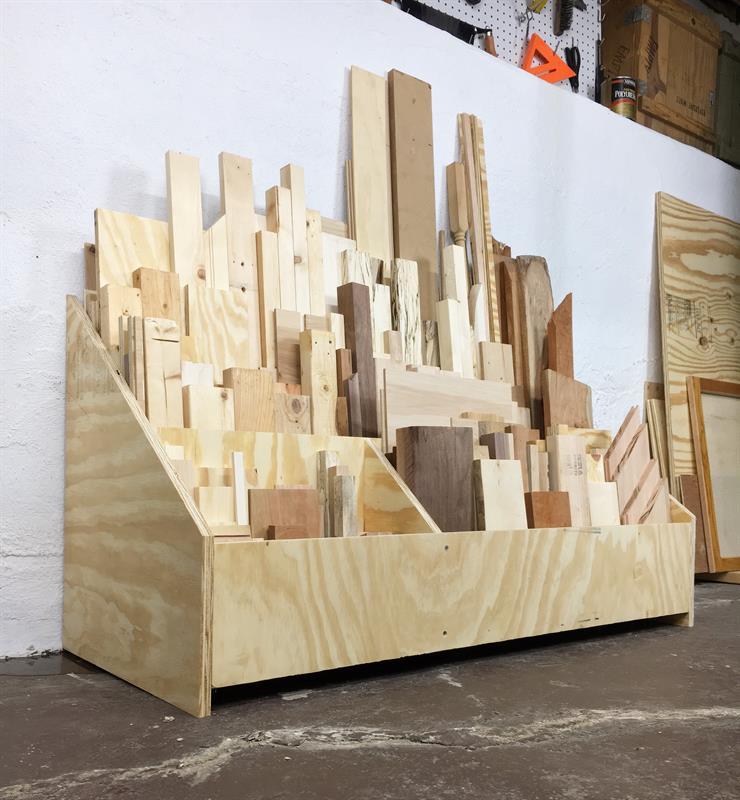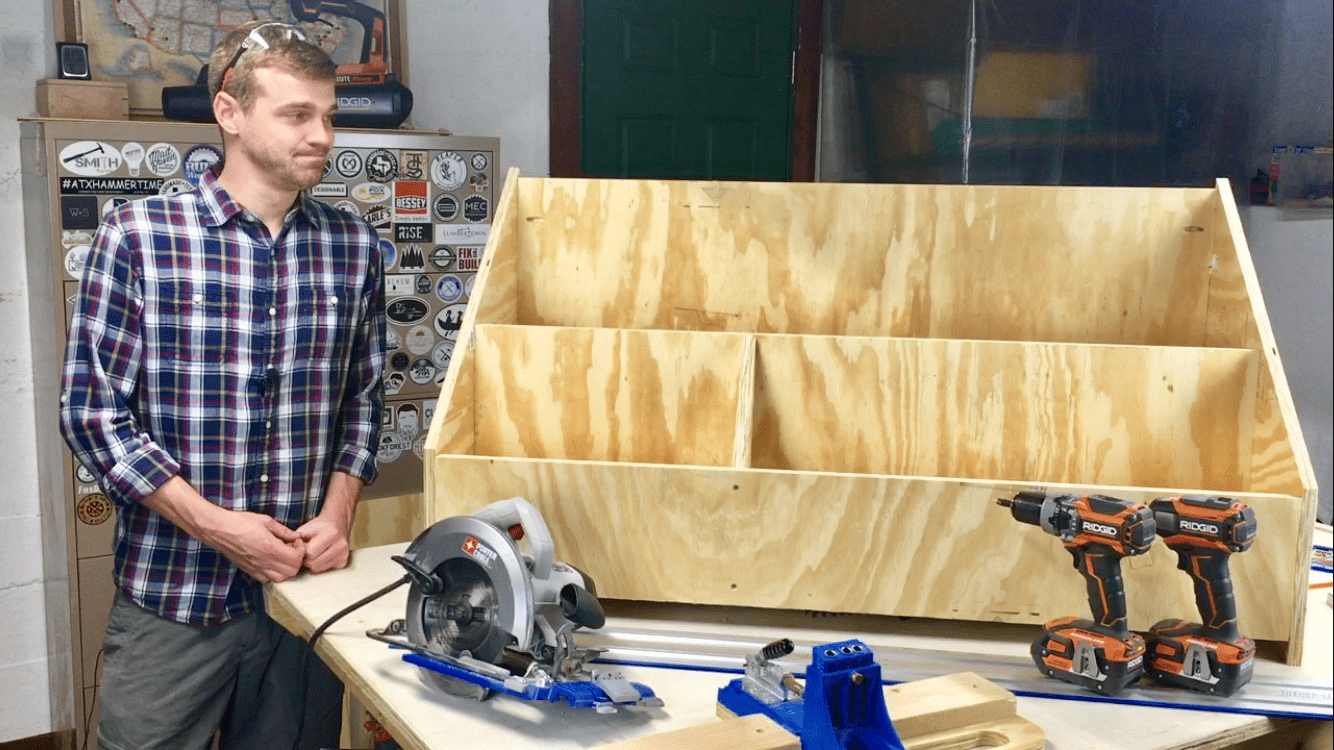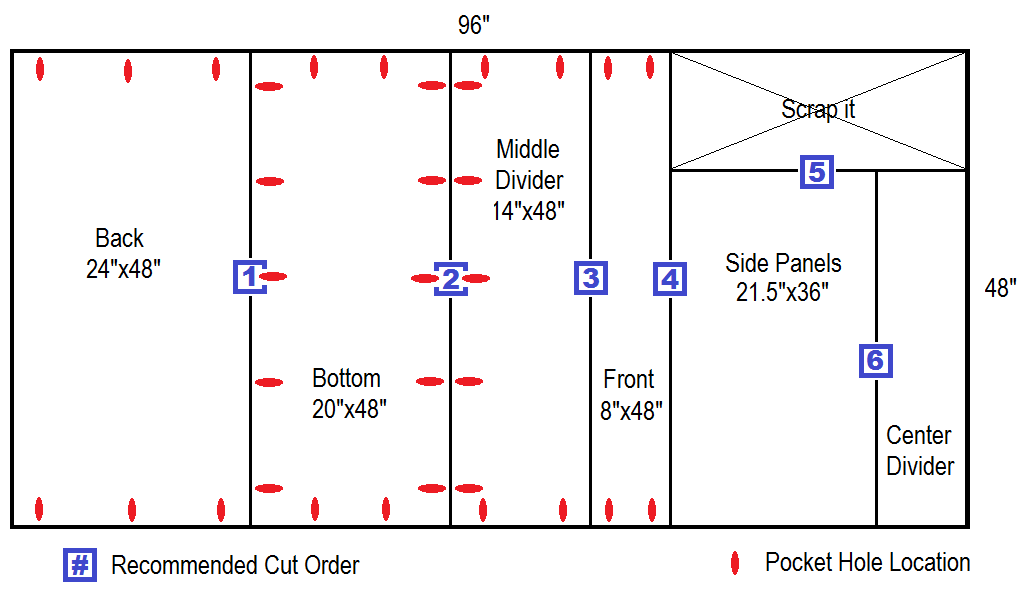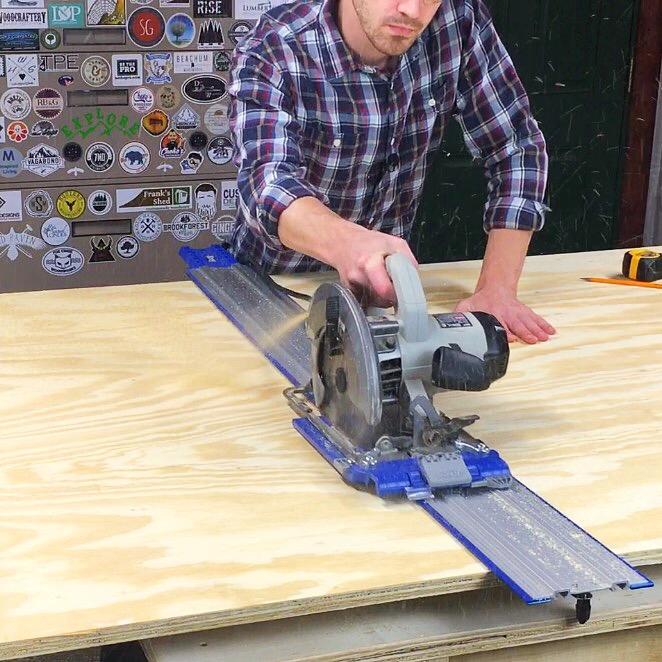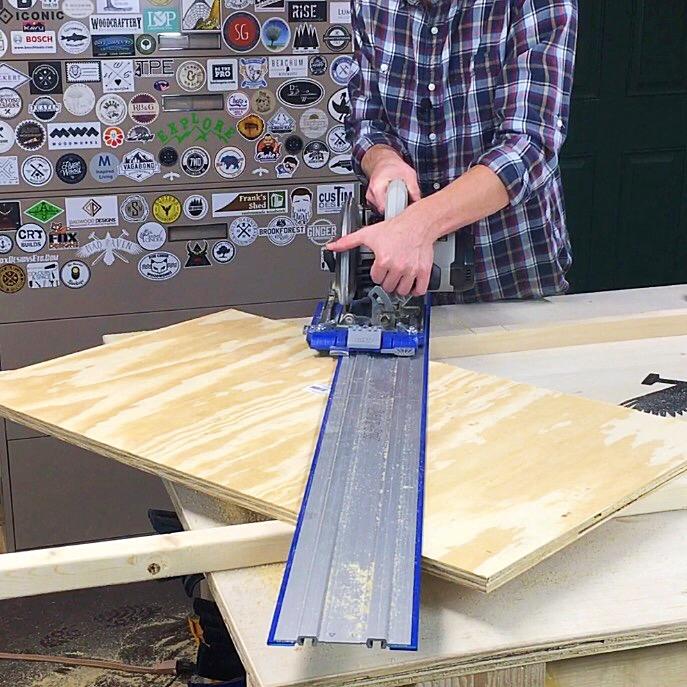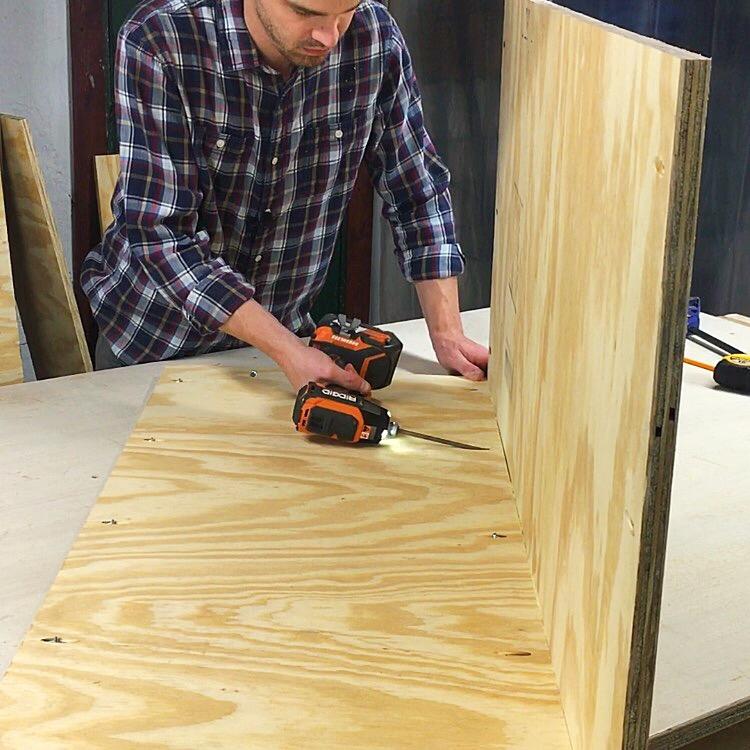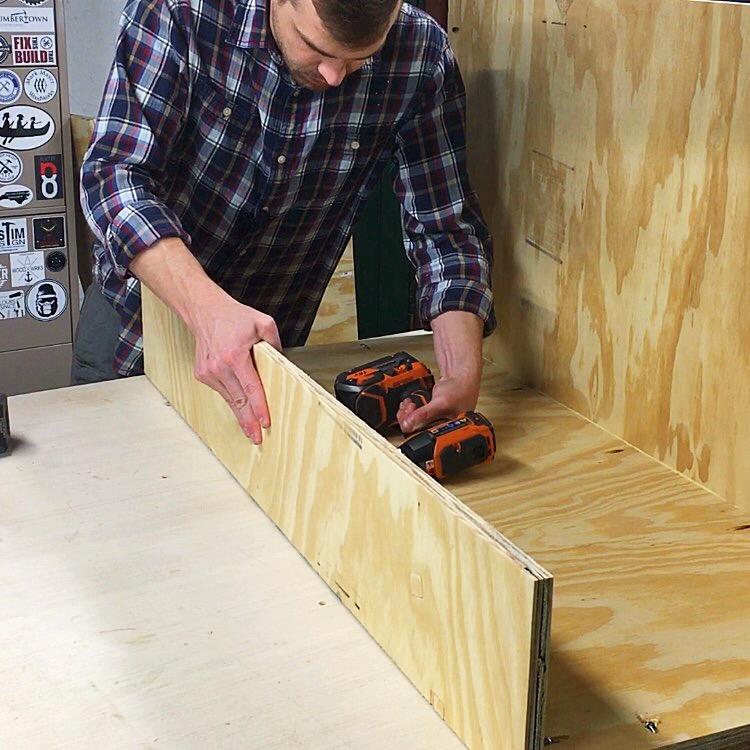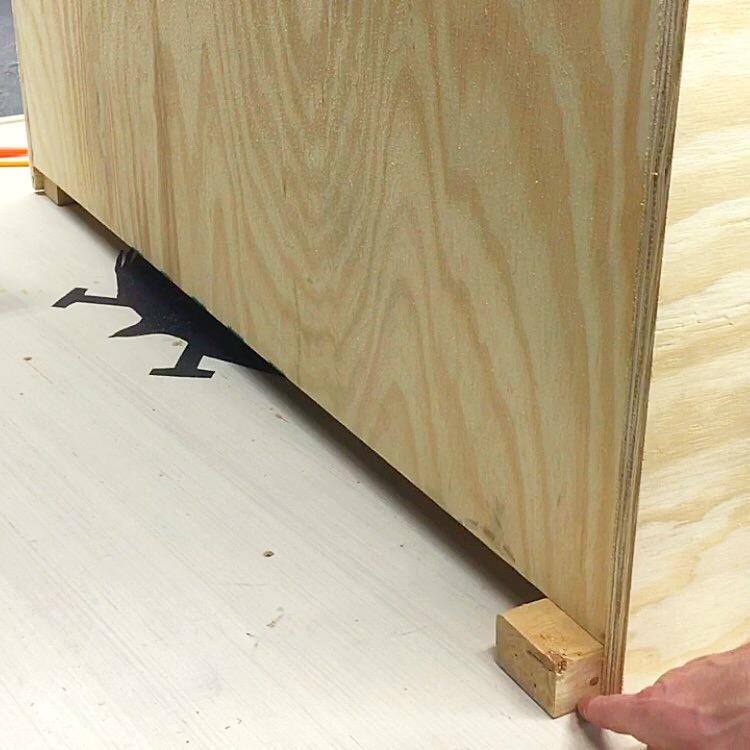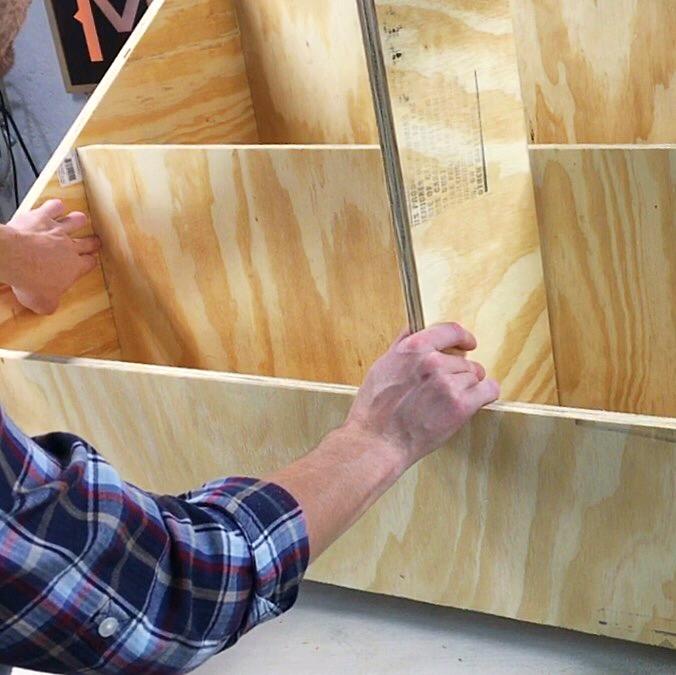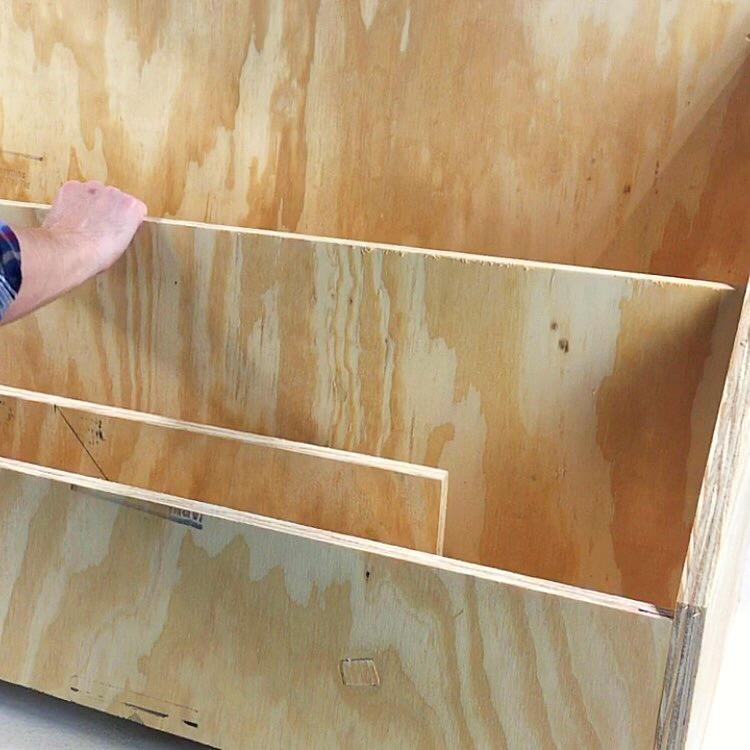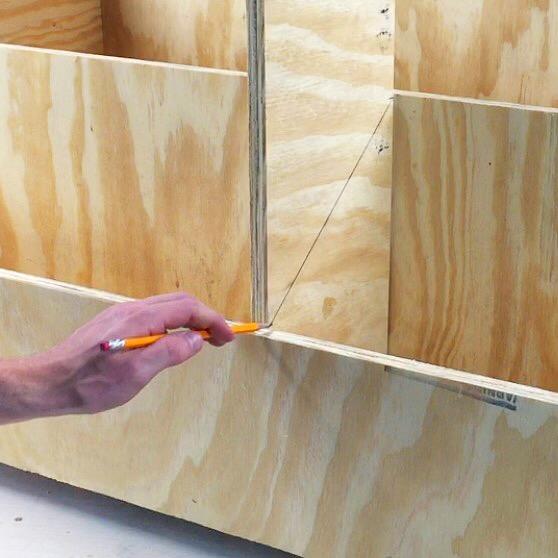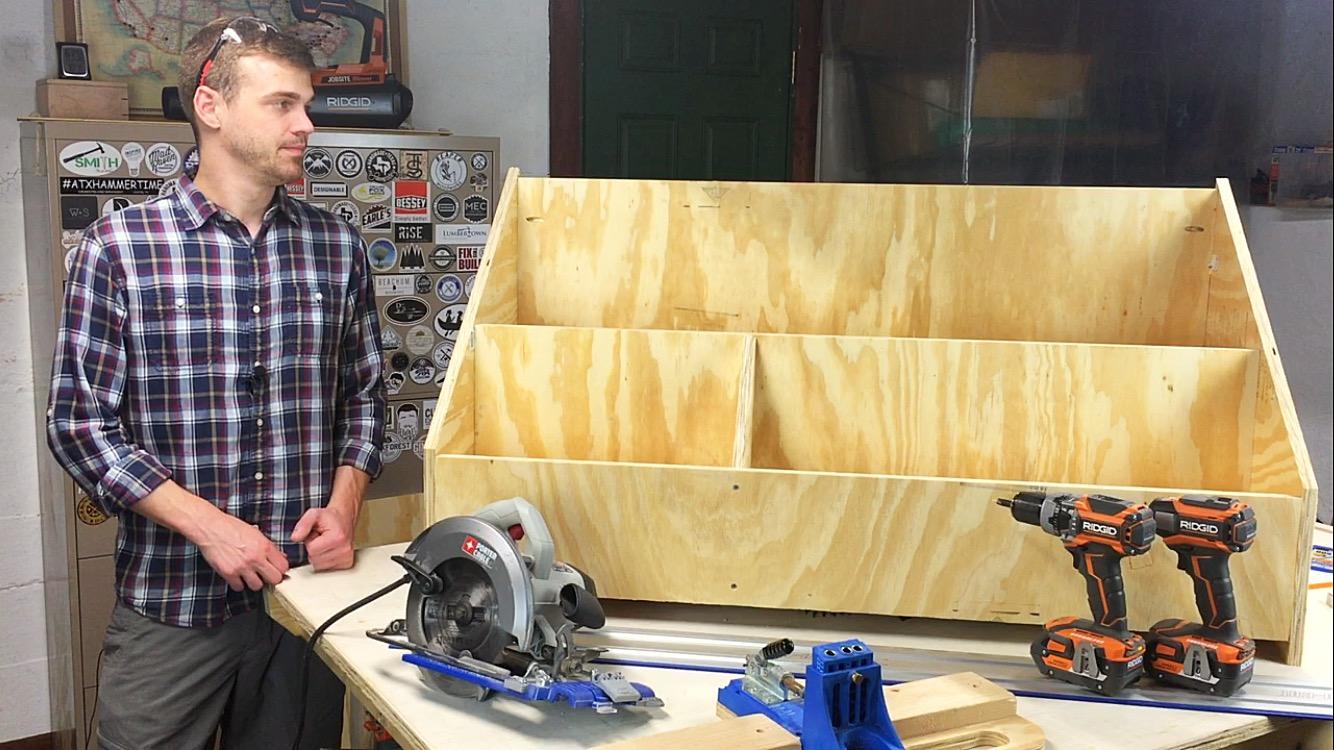Scrap Wood Organizer
By Mad Raven WoodworksIf you are a scrap hoarder like me, you need additional, cost-effective ways to store your extra materials. This scrap bin requires nothing more than a single 4'x8' sheet of plywood, a drill, and a circular saw, but the Kreg Jig and Kreg Accu-Cut will definitely make things faster and easier.
Directions
-
Complete Cut List
Using the provided cut list and cut diagram, cut the 3/4" x 4' x 8' plywood sheet into the specified dimensions. A circular saw and guide such as the Kreg Accu-Cut or Kreg Rip-Cut is recommended for precision. On the provided image, I listed the recommended cutting order for your convenience.
-
Split the Side Panels
Place the 21.5" x 36" Side Panel sheet on your work surface. This will become two angled sides once cut. To achieve this, identify one of the 36" sides and mark a notch 10" from a corner. Now repeat this process on the opposite corner. Draw a diagonal line with a straight edge connecting the two marks and then split this large panel into two smaller ones using your circular saw and edge guide.
-
Drill Pocket Holes
Using your Kreg Jig and the cut diagram I provided, drill pocket holes in all thirty-three locations that were specified. They are represented by red ovals in the reference image I made.
-
Assemble Back to Bottom
Lay your bottom panel (20x48) flat on your work surface with pocket holes facing up. It is not necessary to hide these pocket holes because they will be covered with scraps and never seen. Stand the back panel (24x48) up on one side of the bottom panel, spread glue on the joint for added strength, and screw them together with your drill using 1 1/4" Kreg Screws.
-
Assemble Front to Bottom
The back is attached and now you will add the front. Stand the front panel (8x48) up on the opposite side of the bottom panel, spread glue on the joint, and screw them together with your drill like you did with the back panel.
-
Elevate Project
At this point, you should have the front and back attached to the bottom. Place scrap 2x material (or two layers of 3/4" material) under both side of the piece, elevating it 1.5" above the work surface. This will act as a spacer and prevent you from having to mark a 1.5" line across the bottom of each side panel (alternatively, you could lay the whole assembly on the back panel instead of bottom and assemble it that way if you have no 1.5" thick material lying around).
-
Attach Sides
With your back, bottom, and front piece elevated 1.5" above your work surface, spread glue on the ends and attach the two side panels with your drill. Be sure to drive screws into the 6 pocket holes on the back, 4 on the bottom, and 4 on the front.
-
Measure and Mark the Middle
With the basic construction done, you now have some room for customizing this project to your preferences. I chose to keep the back portion of my bin larger with two smaller compartments in the front so I picked the longer/skinnier off-cut as my center divider. Measure your preferred center divider (mine was 8 1/16" wide, but yours will likely vary), and then measure and mark that distance on the bottom panel and side panels (measuring from the front). This will identify the location of your middle divider (14x48).
-
Attach the Middle
Although you have already measured the width of your center divider and marked out the future location of the middle divider, I advise lying your chosen center divider down on the bottom between the front and the middle as a spacer so you can insure that it will fit snugly. With the middle divider placed in the bin with the pocket holes facing towards the back and your center divider acting as a spacer, attach the middle divider to the bottom. Stand your spacer (center divider) upright on one end and attach the middle divider to the side panel. Repeat this process for the other side panel. While this could all be done by simply measuring and marking, using the center divider as a spacer will guarantee a snug-fitting center divider later.
-
Mark and Cut Center Divider
With your middle divider attached, stand your center divider upright and place it wherever you prefer in the front of the bin. I chose to set mine slightly off to the left side. Mark the point where the top of the front meets the center divider (7 1/4"). Then mark the point where the top of the middle divider meets the center divider (14"). Connect these marks using a ruler to create another angle. Cut the angle using a circular saw, jigsaw, or miter saw. TIP: If you would like three compartments in the front instead of two, you can simply take the off-cut of your center divider, flip it upside down, and cut it to 14" tall. Since the off-cut angle is already correct, you now only need to cut it to length.
-
Attach the Center Divider
With your angle(s) cut, place the center divider(s) wherever you'd like in the front compartment. The space might be too tight to use pocket holes, so I advise countersinking and drilling screws in the front of the front panel and the back of the middle divider. Once the center divider is attached, step back and have a cold one. You've earned it.
-
Customize (Optional)
This design has the potential to be customized for your individual work preferences. Add casters to the bottom to make your bin mobile. Use the extra scrap materials to make a compartment on the side for storing your tape measure and pencils. Apply a finish for long-lasting durability. Make two bins and screw them together back-to-back to make a larger scrap bin. The sky is the limit and I'm looking forward to seeing what you come up with!
-
Review the Entire Plan
Before beginning, be sure to review all 13 steps. This is good practice for all plans and will help avoid miscommunication along the way. Also, I have linked the URL to my YouTube tutorial (can be found in "extras" tab) for those that prefer a more visual demonstration. That video may clear up any questions you might have during this process. Now, get your safety glasses on and let's build something.



